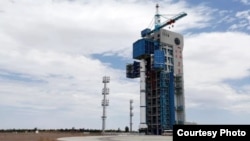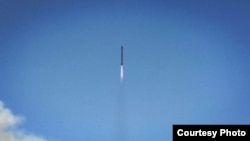China has launched two satellites for Pakistan to survey resources and monitor natural disasters for agriculture research, as well as the progress of infrastructure-related projects being built with billions of dollars of unprecedented Chinese investment.
Pakistani officials said the twin launch Monday from the Jiuquan center in northwest China included Islamabad’s first remote sensing satellite, called PRSS-1. Chinese media reported the PRSS-1 is the first optical remote sensing satellite sold to Pakistan.
A domestically developed Pakistani scientific experiment satellite, PakTES-1A, was also sent into orbit via the same rocket, officials said.
“The successful implementation of PRSS-1 and PakTES-1A projects has further strengthened the space cooperation between Pakistan and China for future collaborations,” noted a Pakistani foreign ministry spokesman.
Mohammad Faisal said the historic launch will help reduce Pakistan’s dependence on foreign satellites. He said that the PRSS-1 will meet Pakistan’s imagery requirements in the areas of land mapping, agriculture, urban and rural planning, environmental monitoring, natural disaster and water resource management for socio-economic development in the country.
The PRSS-1, which has a designed life of seven years, is "in good condition with its solar panels unfolded smoothly" after entering orbit, according to the Chinese media.
Officials said the satellite will also provide remote sensing information for projects being constructed under the China-Pakistan Economic Corridor or CPEC. The mega cooperation deal was launched three years ago and it is regarded as the flagship of Beijing’s global Belt and Road Initiative.
CPEC is a collection of projects including energy, infrastructure, ports and industrial zones and is expected to bring more than $60 billion in Chinese investment to Pakistan over the next 15 years.
Officials say 22 “early harvest” projects have been completed or are under construction with a total Chinese investment of $19 billion, adding more than 11,000 megawatts of much needed electricity to the national grid and creating more than 70,000 jobs for Pakistanis.






